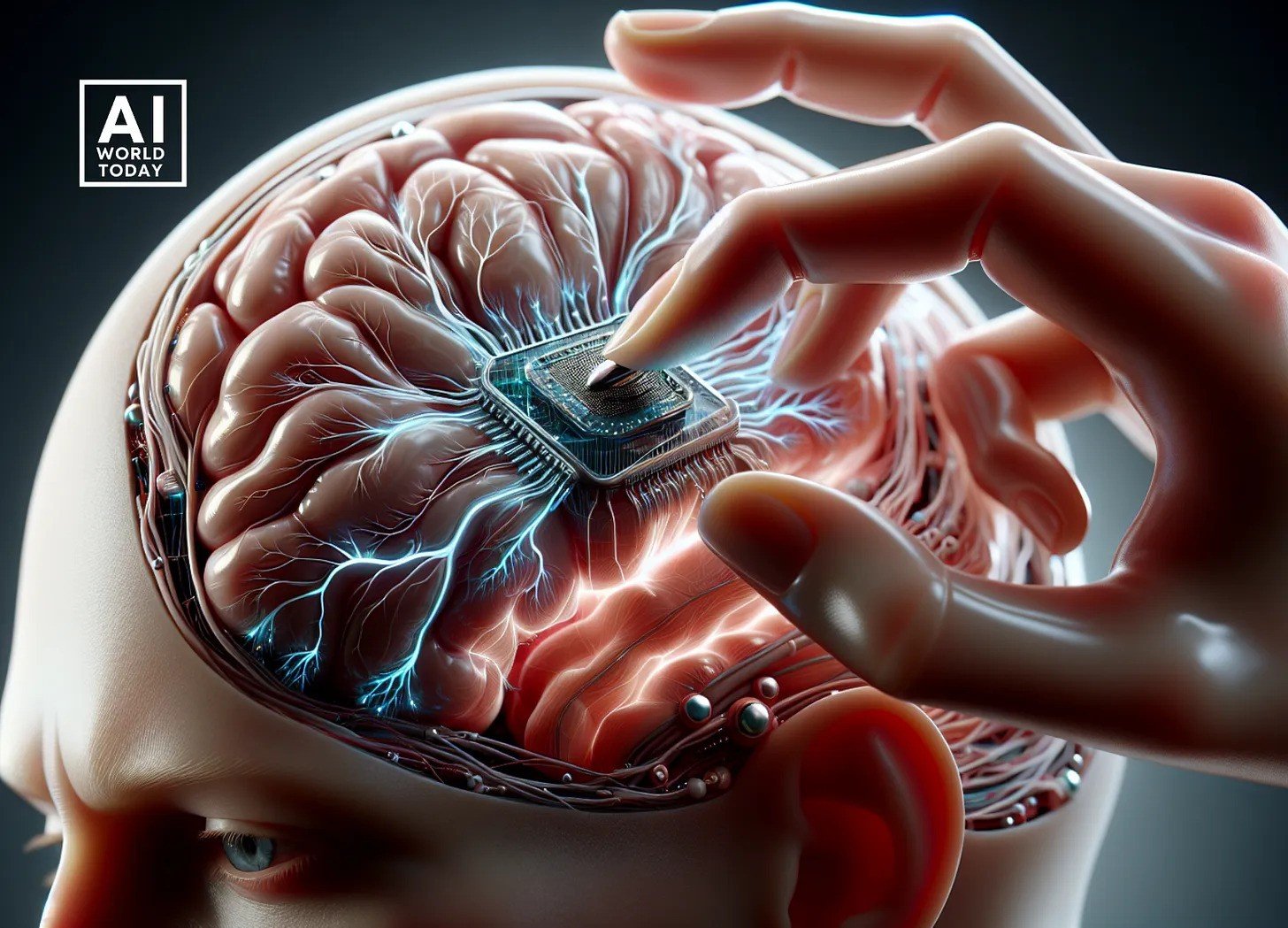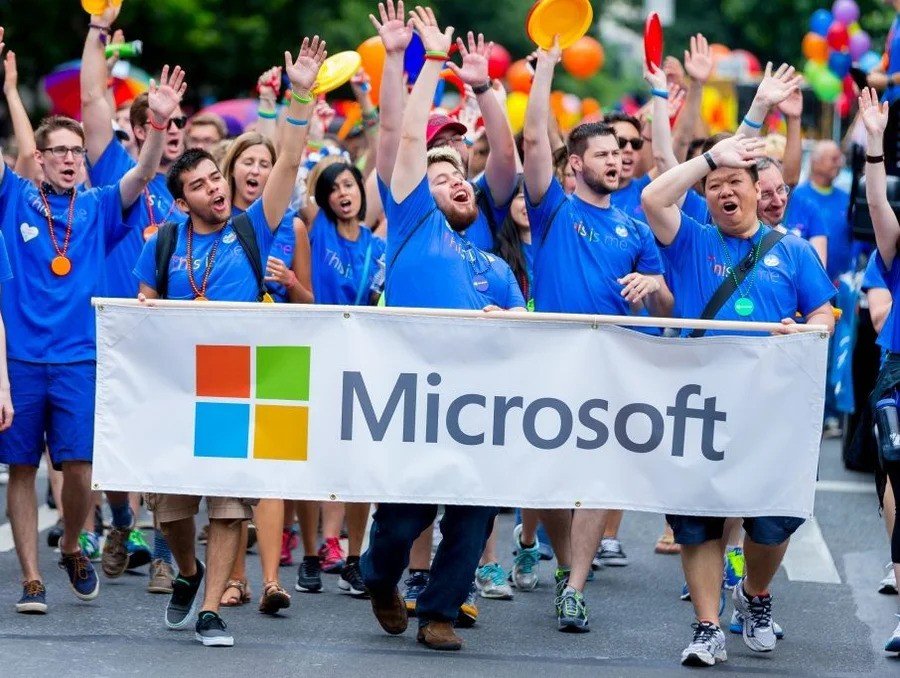In a historic breakthrough, Neuralink has successfully implanted its first brain chip in a human. CEO Elon Musk announced via Twitter that the initial recipient is recovering well and that early results show promising neural spike detection—a key sign of the implant’s effectiveness.
Founded in 2017, Neuralink’s goal has always been to develop cutting-edge brain-computer interfaces (BCIs). While earlier experiments were conducted on monkeys, this weekend marked a new era as Neuralink’s surgical robot “R1” performed its first human procedure, delicately inserting ultra-thin electrodes into the brain with unprecedented precision.
The Implant: “Telepathy”
The device is called Telepathy—designed to allow users to control phones, computers, and other devices using only their thoughts. Initially focused on helping individuals with severe physical disabilities, the long-term vision extends to restoring full body movement and achieving a deep integration with artificial intelligence.
“Imagine someone with paralysis operating a smartphone or typing just by thinking. That’s the power of Telepathy,” Musk shared.
The chip contains thousands of electrodes capable of reading brain activity and translating it into digital commands, essentially bridging the gap between the human brain and machines.
FDA Approval & Funding
After extensive testing and preparation, Neuralink received FDA approval in mid-2023 to begin human trials. Backed by significant funding—including a recent $280 million round—the company has now raised over $640 million, solidifying its leadership in the neurotechnology space.
Ethical and Safety Considerations
While early animal trials sparked ethical debates, the human implantation is being approached with caution. Neuralink emphasizes a gradual rollout, prioritizing safety, monitoring, and transparency throughout the process.
A Future Where Disability Is Optional
Though still in its infancy, the successful implant opens doors to a future where neurological conditions, paralysis, or speech loss may no longer be permanent barriers. As the technology matures, Neuralink could revolutionize healthcare, accessibility, and human potential.
“This is the first step toward a future where humans can merge with AI, extending both our capabilities and our consciousness,” Musk stated.
একটি যুগান্তকারী উন্নয়নে, নিউরালিঙ্ক প্রথমবারের মতো একজন মানুষের মস্তিষ্কে চিপ ইমপ্লান্ট করে ইতিহাস সৃষ্টি করেছে। টুইটারে সংস্থার সিইও ইলন মাস্ক জানান, প্রথম মানব গ্রহীতা ভালোভাবে সেরে উঠছেন, এবং প্রাথমিক ফলাফলে আশাজনক নিউরাল স্পাইক শনাক্তকরণ দেখা গেছে—যা চিপের কার্যকারিতার একটি মূল নির্দেশক।
২০১৭ সালে প্রতিষ্ঠিত নিউরালিঙ্কের মূল লক্ষ্য ছিল মস্তিষ্ক-কম্পিউটার ইন্টারফেস (BCI) প্রযুক্তির উন্নয়ন। আগে এই প্রযুক্তি বানরের ওপর পরীক্ষা করা হয়েছিল। তবে এই সপ্তাহান্তে নিউরালিঙ্কের রোবট সার্জন “R1” প্রথম মানব অস্ত্রোপচার সফলভাবে সম্পন্ন করে, অত্যন্ত সূক্ষ্ম ইলেকট্রোড মস্তিষ্কে প্রতিস্থাপন করে।
চিপটির নাম: “টেলিপ্যাথি”
এই ডিভাইসের নাম টেলিপ্যাথি—এর লক্ষ্য হলো ব্যবহারকারীদের মনের শক্তি দিয়ে ফোন, কম্পিউটার বা অন্যান্য ডিভাইস নিয়ন্ত্রণের সক্ষমতা দেওয়া। শুরুতে এটি শারীরিকভাবে অক্ষম ব্যক্তিদের সহায়তা করার জন্য তৈরি হলেও ভবিষ্যতের লক্ষ্য আরও বড়: শরীরের সম্পূর্ণ কার্যক্ষমতা পুনরুদ্ধার এবং এআই-এর সাথে মানব মস্তিষ্কের সমন্বয়।
“কল্পনা করুন, পক্ষাঘাতগ্রস্ত কেউ শুধুমাত্র চিন্তা করে স্মার্টফোন চালাচ্ছে বা টাইপ করছে—এই শক্তিই টেলিপ্যাথির,” বলেন মাস্ক।
এই চিপে রয়েছে হাজার হাজার ইলেকট্রোড, যা মস্তিষ্কের কার্যকলাপ পড়ে তা ডিজিটাল কমান্ডে রূপান্তর করতে সক্ষম—এতে মানুষ ও মেশিনের মধ্যে একটি সেতুবন্ধ তৈরি হয়।
FDA অনুমোদন ও অর্থায়ন
দীর্ঘ প্রস্তুতি ও পরীক্ষার পর, ২০২৩ সালের মাঝামাঝি নিউরালিঙ্ক FDA-এর অনুমোদন পায় মানব ট্রায়ালের জন্য। সম্প্রতি তারা ২৮০ মিলিয়ন ডলার তহবিল সংগ্রহ করেছে, যার ফলে কোম্পানির মোট সংগ্রহ দাঁড়িয়েছে ৬৪০ মিলিয়ন ডলারেরও বেশি—এতে নিউরালিঙ্ক নিউরোটেকনোলজির অগ্রণী হিসেবে প্রতিষ্ঠিত।
নৈতিকতা ও নিরাপত্তা
আগের পশু পরীক্ষাগুলো কিছু বিতর্কের জন্ম দিলেও মানব চিপ ইমপ্লান্ট সতর্কভাবে পরিচালিত হচ্ছে। নিউরালিঙ্কের লক্ষ্য হলো ধাপে ধাপে অগ্রগতি, যেখানে নিরাপত্তা, পর্যবেক্ষণ ও স্বচ্ছতাকে সর্বাধিক গুরুত্ব দেওয়া হচ্ছে।
এমন ভবিষ্যৎ যেখানে অক্ষমতা ঐচ্ছিক
এখনো প্রাথমিক পর্যায়ে থাকলেও, এই সফল ইমপ্লান্ট এমন এক ভবিষ্যতের দ্বার খুলে দেয়, যেখানে স্নায়বিক সমস্যা, পক্ষাঘাত কিংবা বাকশক্তি হ্রাস আর স্থায়ী বাধা নাও থাকতে পারে। ভবিষ্যতে এই প্রযুক্তি স্বাস্থ্যসেবা, অ্যাক্সেসিবিলিটি ও মানব সম্ভাবনাকে নতুন উচ্চতায় নিয়ে যেতে পারে।
“এটাই প্রথম ধাপ, যেখানে মানুষ এআই-এর সাথে মিশে যেতে পারবে, আমাদের ক্ষমতা ও চেতনার সীমানা প্রসারিত করতে,” বলেন মাস্ক।




